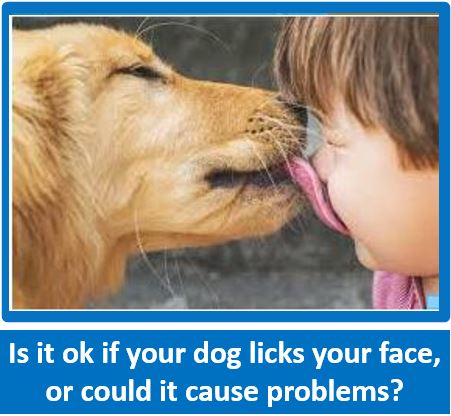
Please visit and LIKE our Facebook Page and share with family, friends and on your own Facebook page, and ask them to share further – it is only by working together and sharing knowledge and education that we can improve the lives of dogs and assist owners. We do not inundate you with posts – an average of 5 per week, and the odd Did You Know. Thank You!
Dominance and Pet Dogs - Often a very misunderstood topic
This excellent article which will help you to understand some of the misunderstandings on dominance, is by by: Eileen Koval, CDBC, CBCC-KA, CPDT-KA
www.confidentcaninesdogtraining.com
This excellent article which will help you to understand some of the misunderstandings on dominance, is by by: Eileen Koval, CDBC, CBCC-KA, CPDT-KA
www.confidentcaninesdogtraining.com

There are many definitions of dominance and not every is speaking to the same definition when discussing dominance in pet dogs. We all may be speaking of different things when we are talking with owners, trainers, ethologists, or psychologists about dominance. Dominant behavior exists in any group of highly social mammals, including pet dogs, although it does not mean what owners or some trainers may think it means. This can lead to a different interpretation of observed behaviors, depending on the definition (Drews 1993) (Kubinyi 2019). Dog trainers and behavior consultants need to be truthful and scientific with how we address this topic with owners. What we say matters. Ultimately, this will affect human perceptions of dogs’ social behaviors and how people respond to those behaviors.
This is where I am highly concerned as a dog behavior consultant, mainly when I have seen horrific physical and psychological damage owners and “trainers” have done to stop a dog’s supposed dominance. Incorrect information propagated in popular culture as well as in some training circles has led to poor understandings of dog behavior. This is without doubt, and it affects both trainers and the general public alike. This has led to the mass promotion of training philosophies that are against the known scientific understandings of domesticated dog behavior, training and behavior modification methods.
I am sometimes asked about dominance by concerned owners who believe their dog may be displaying dominance over another family dog or is trying to dominate them. They are wrongly assuming that a dog is attempting to establish a strict dominance hierarchy of absolute control of resource with complete submission of the other parties. What happens next after they make this assumption can have devastating consequences for the animal’s welfare. Some of the dogs I work with have previously been heavily shocked, yelled at, or occasionally struck by the owner. The common theme owners and trainers cite is that the dog was being “dominant” which necessitated the response. They believe they are doing the right thing. I recently worked with an aggressive dog that had several inches of severely crusted burn marks across the neck and missing fur due to a shock collar. The owner was so adamant that shock training was necessary to combat the perceived dominance that he continued this training despite the dog’s injuries. He said that he believed this training was the only thing keeping this dog from euthanasia. Eventually, the dog’s bites to people increased in frequency and severity so I was called in to help.
Indeed, how owners define and perceive dominance is everything.
I think that few people believe trainers who say that social dominance doesn't exist in pet dogs, yet it is a common claim amongst positive trainers. At best, this can create a credibility issue, since our words may be ignored if we are found to be giving incorrect information. The worst is the current reality we are seeing: explosive growth of “balanced” and punitive-based trainers around the United States who market so-called “solutions” to behaviors they purport to be dogs attempting to assert absolute control by means of a strict dominance-based hierarchy over the owners and other dogs. We know that domesticated dogs have more fluid social dynamics, meaning that one dog in the group may have preferred access to one resource but not with different resource or in a different context (Bonanni 2017). Even so, the limited research in to the social hierarchies of free ranging dogs and pet dogs indicates that they can be steep even compared to wolves (van der Borg 2015) (Wynne 2020) (Bonanni 2017). Still, one must only sit back and observe the behaviors, body language and intra-group dynamics between dogs to see examples of social dominance between dogs, both in greetings and in scenarios over resources. Owners may observe interactions where dogs try to control access to food, toys, or resting spots; limit each other’s movement; and limit attention using subtle signaling and ritualized aggressive behavior, as well as signs of submission (Bekoff 2019) (van der Borg) (Drews). Resource guarding is very common phenomena amongst pet dogs, and rules may be established within households about how each dog can engage a resource in the presence of the others. It is important to recognize the rich yet subtle body language and signaling in dog-dog interactions. We must identify dominant behaviors, their contexts, underlying factors, and the function of those behaviors when it poses a problem for households so we can find the best peaceable solutions for each unique situation.
Owners recognize when they see their dog consistently displaying assertive or pushy behavior toward other dogs in the home, consistently getting access to preferred spots, toys, food, or people. In ethology this is dominance of competitive ability (van der Borg 2015). A 2019 study published noted that in 78% of instances, owners were correct in identifying ethologically valid instances of dominant behavior. Owners frequently recognize dominant behavior when they see it, but they do not necessarily understand what it means or what to do about it (Kubinyi 2019). There is a vacuum that can be filled either by ethical, science-based trainers or the television personality view of dog training that labels it as a personality trait in a constant struggle for absolute power that much be confronted with physical force and intimidation.
Personally, I previously steered clear of using the words “dominance” or “dominant” with regard to pet dogs because I had seen the awful things people did to dogs when they mistakenly believed they had to reclaim the dominant position. I am no longer of that mindset for a couple reasons. First, dog trainers and behavior consultants should not separate ourselves from science and those performing this crucial research.
If we claim to be science-based then we need to embrace it, including terminology and concepts that may make us uncomfortable. What trainers and behavior consultants say matters because if we present incorrect information once, they why would anyone believe us again?
If dog training and behavior professionals claim to be science-based then we should promote actual scientifically-sound views on dominance and dominant behavior. We should not counter one extreme by going to another extreme that takes us outside what is truthful. This only opens the door to those with less knowledge and ethics. Second, we need to explore what dominance and dominant behavior are in actuality so we can gain greater insight into the functions of particular behaviors that we observe in the pet dogs we live and work amongst. The words may be the same, but the meaning and implication of “dominance” are different from those asserted by celebrity trainers and other coercive trainers. Still, social dominance in dogs is not a myth (Wynne 2021) (Bekoff 2012).
It would be at odds with both scientific research and owner observations to say that dominant behavior does not exist in domesticated dogs, but the function of the dominant behavior is different than what popular understanding alleges. Dogs are not trying to dominate their owners. Owners control nearly all the important resources in pet dogs’ lives from when and what they eat, their movements within or between spaces (e.g. leashes, gates, doors), when they have social opportunities, and when and where they can defecate. This limited supply of resources and lack of control over outcomes can create issues between dogs within a household. Humans hold all the cards, so they are already exerting dominance. In fact, Dr. Clive Wynne, a psychology professor who studies animal behavior, expressed this observation in an article featured in The Washington Post in August 2021. He further described how dogs already show signs of deference toward humans when they lick the owner on the mouth or pass their head low under the owner’s hand. This can also be observed between dogs, with heads passed under the chin, in addition to subtle signaling and ritualized aggressive behavior (van der Borg 2015). Unfortunately, that is not what punitive-based trainers are successfully marketing to unaware owners. There is no need for owners to assert dominance through force or pain as dominance already exists. Ethical trainers need to provide real information based on the latest research, and not just try to shut down the conversation by saying it does not exist. Otherwise, we miss an opportunity to help people better understand and help their dogs, their social structure and communication, and to provide the unique solutions that situations may require.
Dogs displaying dominant behavior tend to be assertive, anxious or insecure for a multitude of reasons, and may lack training and/or social skills (Wallis 2020). Sometimes, they may even have medical issues contributing to the behavior, such as guarding resting spots if in pain, or guarding food if having increased hunger. Owners and some trainers may not understand the functions of the behaviors they are observing or their underlying causes. With those pieces missing, dominant behavior may be used as an excuse for training that involves harsh, physical punishment and/or intimidation. This training style also fails to truly address the needs of the dog that may be triggering the behavior, or to provide the dog and/or owner with better ways of navigating these situations.
Dog social groups tend to be fluid in which there is not one dog who is dominant all the time. There is no “alpha”. The dog who has preferred access to a resource may change depending on the resource and the situation. Dominance and submissive deference signals can also be observed in social greeting contexts without any resource (van der Borg 2015). Unlike wolves, there was not an evolutionary need for dogs to cooperate when their existence hinged on scavenging human garbage dumps (Wynne 2021). Some breeds have been selectively bred for dogs to get along with one another since they had to work in groups since dogs needed to work well together on big hunts, such as beagles. On the other hand, guarding behavior is something humans have purposely selected for, so we have encouraged dogs to “protect what is mine”. It should be no surprise that resource-guarding and owner guarding are extremely common behavior complaints amongst dog owners.
While I used to steer conversations another direction, I have since started having clear conversations about dominance with owners that involves clear explanation, nuance and the functions of the behaviors that concern them. Sometimes, they have already talked to another trainer who have labeled the behaviors as “dominance”, but with different meanings and solutions. I cite scientific studies, maintain transparency about my observations and the purpose of the behaviors, and why my least intrusive, minimally aversive solutions will address the root causes of the issues. Otherwise, it is my word against the other trainers’ word. I think that owners are overly worried about dominance while reward-based trainers tend to be in denial of the existence of dominance in dogs. We are too familiar with permanent labels of “dominant” or “alpha” being inappropriately applied to a dog’s entire personality, leading people to take abusive training approaches. People tend to have a lot of fear attached to the word "dominance", somewhat thanks to celebrity trainers who, at best, blunder through the topic spreading erroneous information, and at worst, knowingly market dangerous falsehoods. Telling someone that their dog is not "alpha" and not asserting dominance over them does not magically make the fear go away. Genuine discussion of observed behaviors, functions of the behaviors, and solutions goes a long way toward clients better understanding their dogs and avoiding harsh training. It helps them understand why the solutions I am offering are both supported by science and likely to help in the long term while avoiding the fallout that may come with the traditional confrontation-based approaches.
This is where I am highly concerned as a dog behavior consultant, mainly when I have seen horrific physical and psychological damage owners and “trainers” have done to stop a dog’s supposed dominance. Incorrect information propagated in popular culture as well as in some training circles has led to poor understandings of dog behavior. This is without doubt, and it affects both trainers and the general public alike. This has led to the mass promotion of training philosophies that are against the known scientific understandings of domesticated dog behavior, training and behavior modification methods.
I am sometimes asked about dominance by concerned owners who believe their dog may be displaying dominance over another family dog or is trying to dominate them. They are wrongly assuming that a dog is attempting to establish a strict dominance hierarchy of absolute control of resource with complete submission of the other parties. What happens next after they make this assumption can have devastating consequences for the animal’s welfare. Some of the dogs I work with have previously been heavily shocked, yelled at, or occasionally struck by the owner. The common theme owners and trainers cite is that the dog was being “dominant” which necessitated the response. They believe they are doing the right thing. I recently worked with an aggressive dog that had several inches of severely crusted burn marks across the neck and missing fur due to a shock collar. The owner was so adamant that shock training was necessary to combat the perceived dominance that he continued this training despite the dog’s injuries. He said that he believed this training was the only thing keeping this dog from euthanasia. Eventually, the dog’s bites to people increased in frequency and severity so I was called in to help.
Indeed, how owners define and perceive dominance is everything.
I think that few people believe trainers who say that social dominance doesn't exist in pet dogs, yet it is a common claim amongst positive trainers. At best, this can create a credibility issue, since our words may be ignored if we are found to be giving incorrect information. The worst is the current reality we are seeing: explosive growth of “balanced” and punitive-based trainers around the United States who market so-called “solutions” to behaviors they purport to be dogs attempting to assert absolute control by means of a strict dominance-based hierarchy over the owners and other dogs. We know that domesticated dogs have more fluid social dynamics, meaning that one dog in the group may have preferred access to one resource but not with different resource or in a different context (Bonanni 2017). Even so, the limited research in to the social hierarchies of free ranging dogs and pet dogs indicates that they can be steep even compared to wolves (van der Borg 2015) (Wynne 2020) (Bonanni 2017). Still, one must only sit back and observe the behaviors, body language and intra-group dynamics between dogs to see examples of social dominance between dogs, both in greetings and in scenarios over resources. Owners may observe interactions where dogs try to control access to food, toys, or resting spots; limit each other’s movement; and limit attention using subtle signaling and ritualized aggressive behavior, as well as signs of submission (Bekoff 2019) (van der Borg) (Drews). Resource guarding is very common phenomena amongst pet dogs, and rules may be established within households about how each dog can engage a resource in the presence of the others. It is important to recognize the rich yet subtle body language and signaling in dog-dog interactions. We must identify dominant behaviors, their contexts, underlying factors, and the function of those behaviors when it poses a problem for households so we can find the best peaceable solutions for each unique situation.
Owners recognize when they see their dog consistently displaying assertive or pushy behavior toward other dogs in the home, consistently getting access to preferred spots, toys, food, or people. In ethology this is dominance of competitive ability (van der Borg 2015). A 2019 study published noted that in 78% of instances, owners were correct in identifying ethologically valid instances of dominant behavior. Owners frequently recognize dominant behavior when they see it, but they do not necessarily understand what it means or what to do about it (Kubinyi 2019). There is a vacuum that can be filled either by ethical, science-based trainers or the television personality view of dog training that labels it as a personality trait in a constant struggle for absolute power that much be confronted with physical force and intimidation.
Personally, I previously steered clear of using the words “dominance” or “dominant” with regard to pet dogs because I had seen the awful things people did to dogs when they mistakenly believed they had to reclaim the dominant position. I am no longer of that mindset for a couple reasons. First, dog trainers and behavior consultants should not separate ourselves from science and those performing this crucial research.
If we claim to be science-based then we need to embrace it, including terminology and concepts that may make us uncomfortable. What trainers and behavior consultants say matters because if we present incorrect information once, they why would anyone believe us again?
If dog training and behavior professionals claim to be science-based then we should promote actual scientifically-sound views on dominance and dominant behavior. We should not counter one extreme by going to another extreme that takes us outside what is truthful. This only opens the door to those with less knowledge and ethics. Second, we need to explore what dominance and dominant behavior are in actuality so we can gain greater insight into the functions of particular behaviors that we observe in the pet dogs we live and work amongst. The words may be the same, but the meaning and implication of “dominance” are different from those asserted by celebrity trainers and other coercive trainers. Still, social dominance in dogs is not a myth (Wynne 2021) (Bekoff 2012).
It would be at odds with both scientific research and owner observations to say that dominant behavior does not exist in domesticated dogs, but the function of the dominant behavior is different than what popular understanding alleges. Dogs are not trying to dominate their owners. Owners control nearly all the important resources in pet dogs’ lives from when and what they eat, their movements within or between spaces (e.g. leashes, gates, doors), when they have social opportunities, and when and where they can defecate. This limited supply of resources and lack of control over outcomes can create issues between dogs within a household. Humans hold all the cards, so they are already exerting dominance. In fact, Dr. Clive Wynne, a psychology professor who studies animal behavior, expressed this observation in an article featured in The Washington Post in August 2021. He further described how dogs already show signs of deference toward humans when they lick the owner on the mouth or pass their head low under the owner’s hand. This can also be observed between dogs, with heads passed under the chin, in addition to subtle signaling and ritualized aggressive behavior (van der Borg 2015). Unfortunately, that is not what punitive-based trainers are successfully marketing to unaware owners. There is no need for owners to assert dominance through force or pain as dominance already exists. Ethical trainers need to provide real information based on the latest research, and not just try to shut down the conversation by saying it does not exist. Otherwise, we miss an opportunity to help people better understand and help their dogs, their social structure and communication, and to provide the unique solutions that situations may require.
Dogs displaying dominant behavior tend to be assertive, anxious or insecure for a multitude of reasons, and may lack training and/or social skills (Wallis 2020). Sometimes, they may even have medical issues contributing to the behavior, such as guarding resting spots if in pain, or guarding food if having increased hunger. Owners and some trainers may not understand the functions of the behaviors they are observing or their underlying causes. With those pieces missing, dominant behavior may be used as an excuse for training that involves harsh, physical punishment and/or intimidation. This training style also fails to truly address the needs of the dog that may be triggering the behavior, or to provide the dog and/or owner with better ways of navigating these situations.
Dog social groups tend to be fluid in which there is not one dog who is dominant all the time. There is no “alpha”. The dog who has preferred access to a resource may change depending on the resource and the situation. Dominance and submissive deference signals can also be observed in social greeting contexts without any resource (van der Borg 2015). Unlike wolves, there was not an evolutionary need for dogs to cooperate when their existence hinged on scavenging human garbage dumps (Wynne 2021). Some breeds have been selectively bred for dogs to get along with one another since they had to work in groups since dogs needed to work well together on big hunts, such as beagles. On the other hand, guarding behavior is something humans have purposely selected for, so we have encouraged dogs to “protect what is mine”. It should be no surprise that resource-guarding and owner guarding are extremely common behavior complaints amongst dog owners.
While I used to steer conversations another direction, I have since started having clear conversations about dominance with owners that involves clear explanation, nuance and the functions of the behaviors that concern them. Sometimes, they have already talked to another trainer who have labeled the behaviors as “dominance”, but with different meanings and solutions. I cite scientific studies, maintain transparency about my observations and the purpose of the behaviors, and why my least intrusive, minimally aversive solutions will address the root causes of the issues. Otherwise, it is my word against the other trainers’ word. I think that owners are overly worried about dominance while reward-based trainers tend to be in denial of the existence of dominance in dogs. We are too familiar with permanent labels of “dominant” or “alpha” being inappropriately applied to a dog’s entire personality, leading people to take abusive training approaches. People tend to have a lot of fear attached to the word "dominance", somewhat thanks to celebrity trainers who, at best, blunder through the topic spreading erroneous information, and at worst, knowingly market dangerous falsehoods. Telling someone that their dog is not "alpha" and not asserting dominance over them does not magically make the fear go away. Genuine discussion of observed behaviors, functions of the behaviors, and solutions goes a long way toward clients better understanding their dogs and avoiding harsh training. It helps them understand why the solutions I am offering are both supported by science and likely to help in the long term while avoiding the fallout that may come with the traditional confrontation-based approaches.




